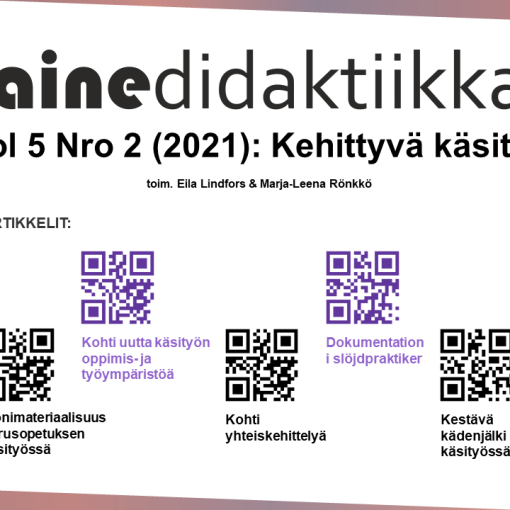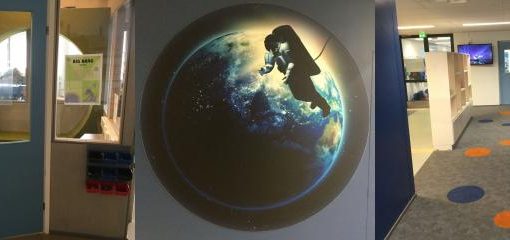Poster for EARLI
Tellervo Härkki ja Henriikka Vartiainen
The study explores how teachers develop collaborative teaching (co-teaching) practices for making projects. Traditionally, Finnish schools have two makerspaces: one for technical crafts and one for textile, each with a specialized subject teacher. Introducing open-ended making projects that place pupils in charge of their own learning and acquisition of innovation, collaboration and digital skills demands flexible use of both makerspaces, requiring teachers to design adaptive practices to support pupils’ agency. This setting affords two vehicles for change: making projects and co-teaching.
To study the emergence of co-teaching models and related challenges, we pose two research questions. 1) What models of co-teaching appear in making projects? 2) What challenges emerge in co-teaching as teachers construct teaching practices for making projects?
The data refer to seven team interviews with teachers (N=16) at the end of the making projects. Using qualitative content analysis, co-teaching practices referred to in the interview transcripts were found to relate to planning, classroom delivery and evaluation.
The findings show that collaborative practices for planning and evaluation were more challenging to construct than for classroom delivery. Further, the participating teachers focused on the practicalities of making projects rather than engaging in reflective conversation and developing collaborative accountability.
Although all Finnish teachers are taught to reflect on their teaching practices, in-service tradition appeared to differ. Workshops and discussion items focusing on key challenges were developed. Further changes are needed, both in school practices and in teacher education.



